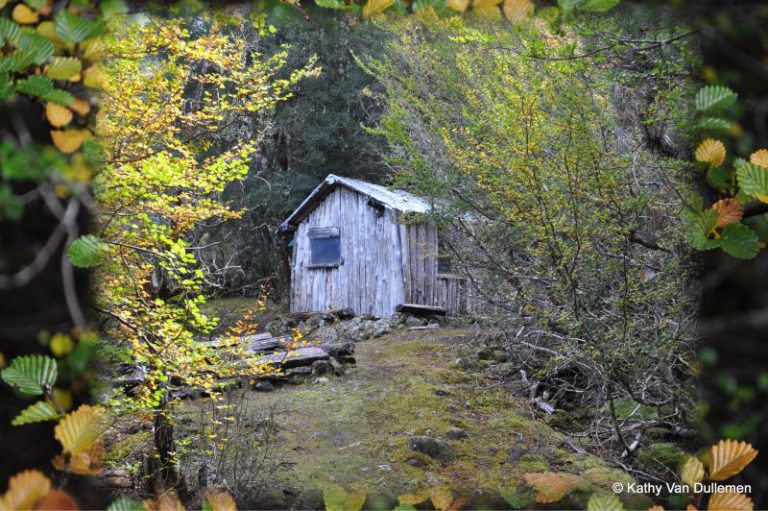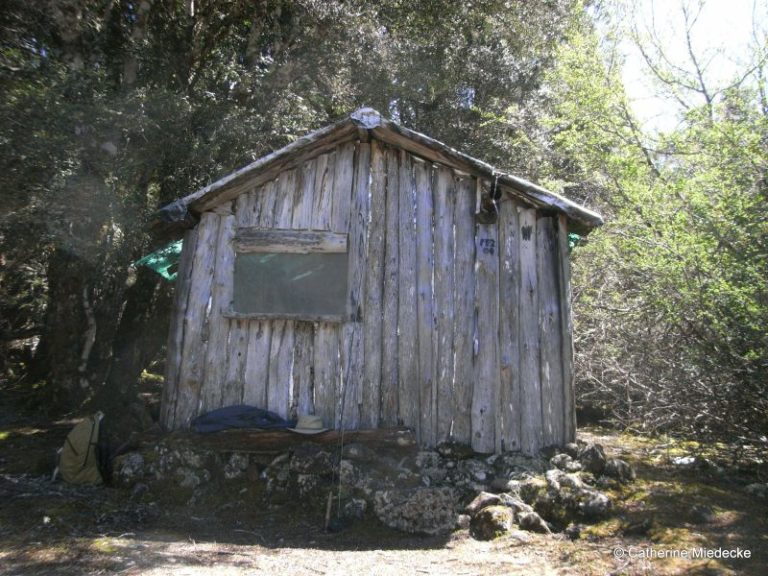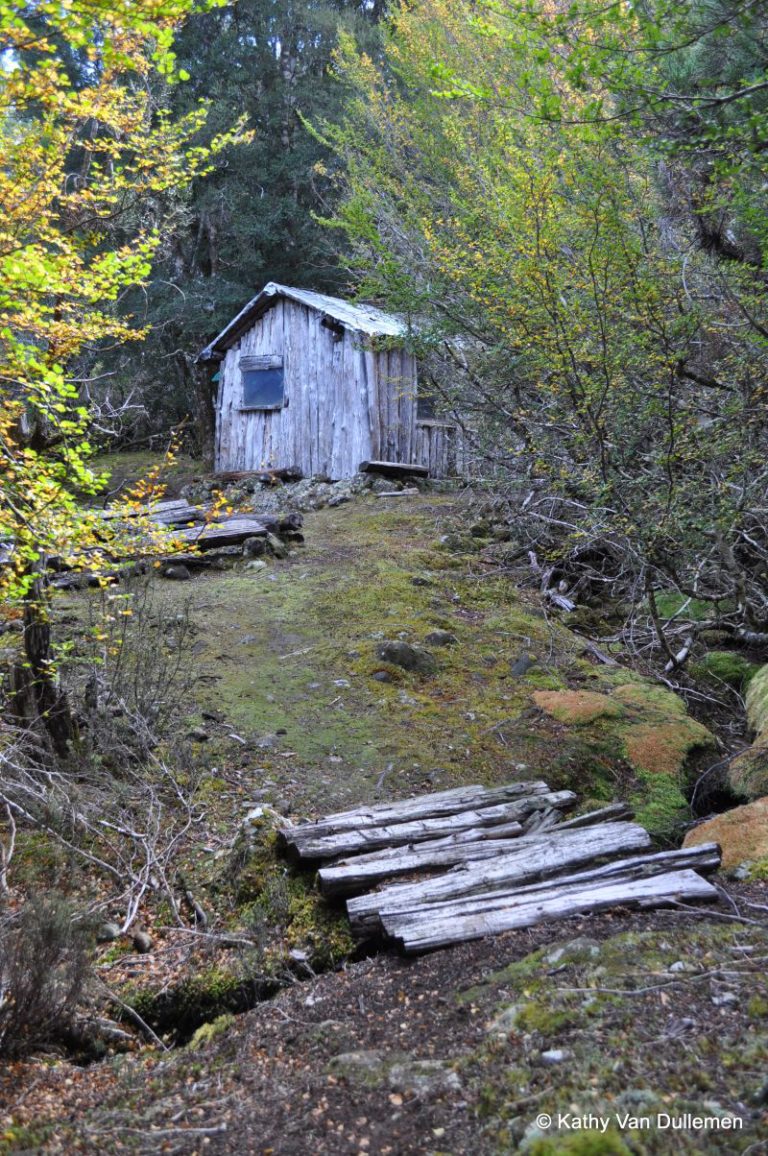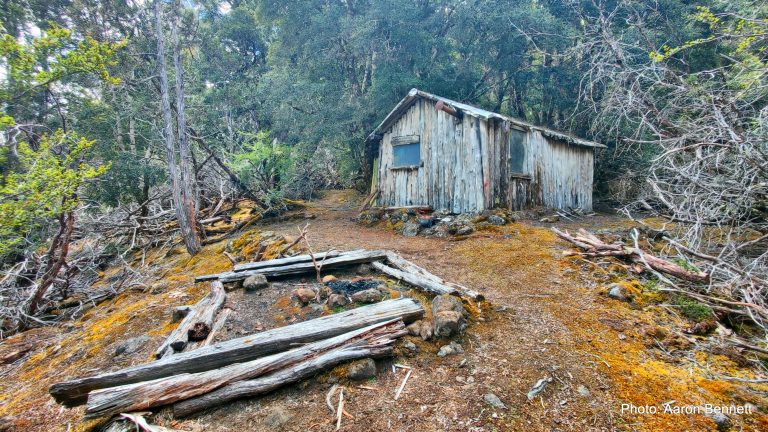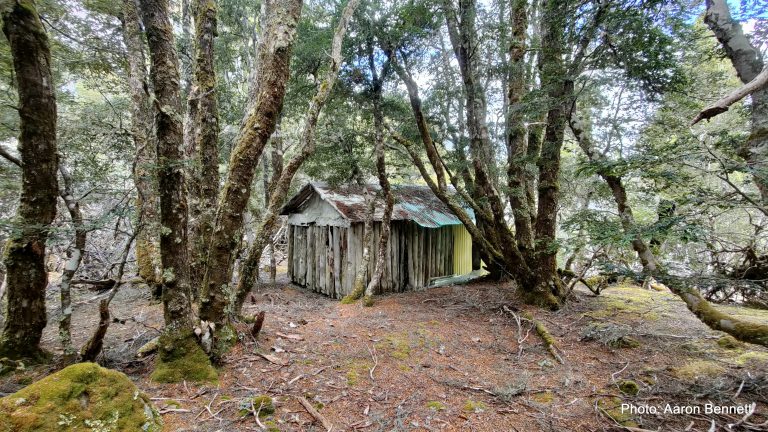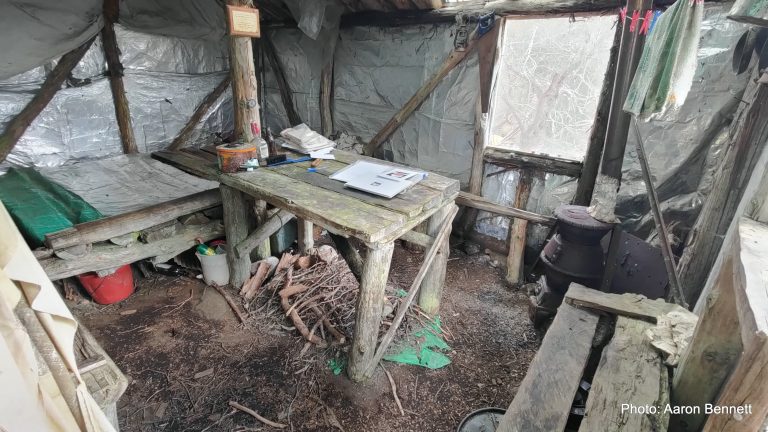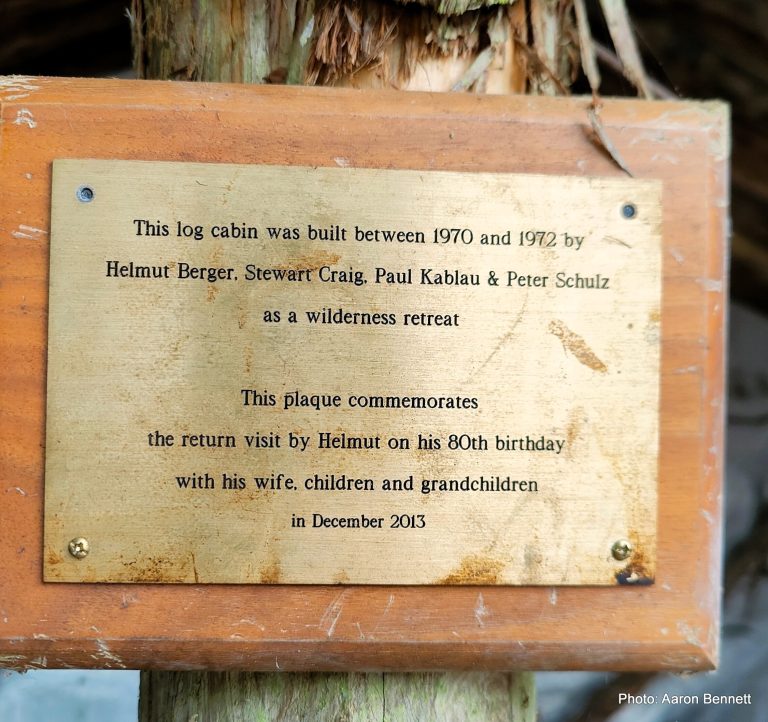Lake Ina Hut
Lake Ina Hut is the end result of a dream held by four men with two things in common – they were all immigrants to Tasmania and they all loved the State’s mountain wilderness. Helmut Berger was from Vienna, Austria as was Peter Schulz. Paul Kablau was from Germany and Stewart Craig was Scottish. The foursome investigated various locations while bushwalking in the Central Plateau before choosing a beautiful area amongst myrtle and fagus beech on the northern end of Lake Ina as the ideal spot to build their wilderness hide-away. At that time the area was Crown Land, before becoming a National Park, and all that was required was for the men to pay a small fee once permission was granted and their dream was one step closer to becoming a reality. Work commenced in 1970 and it took two years of frequent weekend working bees during summer months and less frequent during the off seasons before it resembled a hut which could provide shelter. During the building period the men erected tents for shelter and accommodation. The hut was built primarily from celery top pine, with a dirt floor, and a row of stacked stones around the outside base. Timber was sourced from around the lake. No trees were cut down, the men using only fallen logs which they ferried to the building site by raft. All tools and sheets of roofing iron were carried in to the site by the men on their backs. It was no mean feat when you consider that the walk into the hut site, via Clarence Lagoon, would take the fit foursome between 3.5 to 5 hours after a road trip from Hobart which added another 3 hours to their overall journey. By 1980 the single roomed hut was fully completed with perspex windows and a pot bellied stove. The hut was fitted out with benches for seating, with another for sleeping and a central table. The walls were insulated and adorned with various tools, utensils and implements. Sheets of laser light allowed for natural lighting. With only a piece of canvas draped in the doorway, the hut was not vermin proof. In more recent times a solid, albeit removable door has been erected to keep the possums out. The four friends referred to it as “The Log Cabin” – today it is known as Lake Ina Hut. In the years after construction of the hut, family and close friends shared good times with Helmut, Peter, Paul and Stewart, even though its location, probably more because of its isolation than anything, remained a well kept secret. It must have been a bitter-sweet feeling for the four men when the area became a National Park with the hut now classified in the World Heritage Conservation Area – and although the hut was spared, the men were no longer able to regard their little log cabin as their own.

